One of the points I raised when we released the 2017 marketing technology landscape was that “the platformization of marketing technology” was now fully underway. Heterogeneous marketing stacks have become the norm.
Even if many of the integrations between different marketing technologies in a stack are still relatively “shallow” — i.e., passing around fairly lightweight data, such as contact record fields, activity events, and common campaign identifiers — there is nonetheless a basic level of orchestration emerging.
Some of this is being achieved through better platform support by the major marketing clouds (Adobe, HubSpot, IBM, Marketo, Oracle, Salesforce, Sitecore, etc.), growing their official ISV programs. Indeed, most marketing stacks include one or more of these clouds as tentpoles around which more specialized products are connected — “suite and best-of-breed” instead of an either/or choice.
Connecting the Points — The Rise of iPaaS
But for a growing number of companies, the “heart” of their marketing stack integrations isn’t a marketing cloud. It’s a middleware product from the blossoming category of iPaaS (integration-platform-as-a-service).
iPaaS and similar kinds of integration services were built from the ground up to be hubs. You plug all your marketing applications (particularly SaaS products) into the iPaaS service — most of which have hundreds of application connectors ready for you to pick from a simple menu — and then it handles piping data between them via their APIs.
I describe these iPaaS products as a “heart” because they pump data around the marketing stack, pulling and pushing it among all the different applications that a marketing team uses.
But it actually might be more accurate to characterize them as a martech “nervous system.” They send electrical signals throughout your marketing stack in reaction to events that happen in any one of your applications.
For example, someone fills out a form on your website, and that triggers the collected data being distributed to a variety of other applications.
There may also be some processing logic in the hub that dynamically determines which pieces of that data should be sent where. For instance: send updated contact data to your CRM, add an email address to a segmented list in your marketing automation platform, and if conditions suggest this is a priority-worthy lead, fire off an email notice or Slack message to the sales team right away.
The integrations managed by iPaaS solutions aren’t limited to marketing either. They connect to hundreds of other cloud-based applications for sales, customer service, finance, HR, project management, and so on.
Given that the average enterprise uses 1,000 cloud-based apps today, easy cross-app data sharing is valuable to many departments.
But what’s more exciting are the ways iPaaS promotes interdepartmental data sharing. iPaaS is breaking down silos, not just between different apps in the clouds, but between different teams across an organization.
That’s a huge opportunity.
A new report by the investment bank AGC Partners, Integration: The $100-Billion Opportunity No One Wants to Talk About, does an excellent job of illustrating the scale and scope of this market. Its subtitle: Who Wants to Be the “King of Pain”.
Virtual Platforms vs. Marketing Clouds
For years, I thought that the major marketing clouds should aggressively embrace a platform strategy. Watching the incredible growth of the marketing technology landscape over the past 7 years, it seemed obvious that no one vendor could bundle up all of the incredible innovation happening in martech into a single product or arguably even a suite.
The real opportunity, in my humble opinion, was building a marketing platform equivalent of the iPhone: an awesome base product designed and promoted to be augmented by hundreds or thousands of specialized add-on products.
Since marketing thrives on creativity and differentiation, there could be incredible potential for a robust ecosystem of add-ons that would let every marketing team craft their own “snowflake” marketing machine, while the base platform provided a stable foundation with a consistent data model.
While most marketing clouds have come around to this worldview to a certain degree, many were hesitant to place so much emphasis on products that they didn’t own. This created the window for iPaaS products to step in as “virtual platforms.”
To explain the evolution of these virtual platforms and the dynamics between them and the major marketing clouds, it helps to take a look at the different kinds of things marketers do with data. They range from “low order” operations, like storing data or piping it around, to “high order” functions, such as analysis and a data-driven decisioning engines.
Most iPaaS solutions initially focused on making it easy to integrate all your different marketing cloud services. They were the Data Plumbing layer in the above diagram. Many then added Data Parsing/Routing Logic that gave their users — “citizen integrators” — the flexibility to create more intelligent, multi-step recipes for reacting to events from any one connected product and triggering actions in response through other connected products.
Such malleable Data Integration control was what most marketing clouds were terrible at.
Of course, the marketing clouds were still de facto Systems of Record and had their strength in higher order operations for Marketing Execution: once data was stored in their system, they specialized in letting marketers design and deliver marketing communications and experiences using their own decisioning logic on it. And they’ve now been expanding more into Marketing Intelligence, especially with their investments in AI.
You could argue that this was a good choice for the marketing clouds to focus on instead of data integration, as there’s generally more value in higher order data operations than low order ones.
Other things being equal, I agree. But I don’t think it had to be an either/or choice. And ceding data integration to iPaaS has had some negative strategic consequences.
The most significant one is that these iPaaS hubs have become more of the center of gravity in marketing stacks — everything connects to the iPaaS and all integrated data passes through it.
With the iPaaS service at the center of the stack, marketing clouds have been pushed more to the edge. Not all of the data that passes through the iPaaS necessarily makes it into the marketing cloud’s own database. The clouds become just one more service that connects to that central hub — albeit even if they’re a major one, providing most Marketing Execution capabilities.
iPaaS solutions also make it easier for services connected on their edge to be added or removed — which reduces the costs associated with switching services from the marketing cloud to more specialized products. Or even replacing one marketing cloud with another.
You can see the strategic threat.
From Virtual Platforms to Real Platforms (“Hello, CDP”)
The reason I call iPaaS solutions “virtual platforms” is because as long as they focus only on the Data Integration layer, they don’t serve as a System of Record for the data that passes through them, and they don’t provide Marketing Execution or Marketing Intelligence.
They’re strategically positioned at an organization’s data crossroads, but they still rely on other real marketing platforms — e.g., marketing clouds — to do the actual work of understanding and engaging customers.
But what if they expanded their footprint in the data operations stack?
Indeed, this is exactly what customer data platforms (CDPs) have done. Many of them have an iPaaS-like background or capabilities, but they also serve as a System of Record, storing and even normalizing the data that passes through its engine.
Several have now started to implement their own built-in Marketing Execution and Marketing Intelligence capabilities too — while still making it very easy for marketers to plug in alternate execution and intelligence services.
They’re evolving from virtual platforms to real platforms. And becoming an even greater threat to the marketing clouds, displacing them from the bottom up on the data operations stack.
So much so that I expect we’ll see some high-valuation acquisitions of iPaaS/CDP firms by the major marketing clouds — as a defensive move as much as anything else. (Although for some, CDPs will create weird complications within their portfolio with multiple competing systems of record, such as CRMs and DMPs.)
But there are other options.
The “Many Platforms” Worldview — Not All Platforms Are Equal
I think marketing technology is entering a “post-platform” era.
I don’t mean that there won’t be platforms. On the contrary, there will be many services with platform dynamics in marketing’s ecosystem, many operating at different levels of the stack. Thanks to vertical competition, this will include platforms that marketers don’t control, from Amazon, Facebook, Google, etc. It’s a fractal of platforms.
No one product will be the platform.
But not all platforms will be equal. The question will be: what value does a platform deliver by being extensible that motivates an ecosystem to blossom around it? Different platform ecosystems will thrive at different layers of the data operations stack — and have very different economies accordingly.
Systems of Record and Data Integration have been two important needs to be addressed by platform solutions. But as those low-order foundational needs are fulfilled, opportunities shift towards platforms that deliver higher-order functionality.
The truth is that going up the “data operations stack” is not a linear progression. Systems of record tend to be relatively simple — in essence, they’re just databases. Data integration is more complex, especially as you layer on more advanced logic and data enhancement services. But still, there are a limited number of ways to pass data around through APIs.
But as you get into higher order operations on data, complexity grows exponentially. There are a near infinite number of ways to design experiences, distill marketing insights, and govern all these moving parts under a coherent management framework. Just the user experience (UX) challenges here alone are mind-boggling.
Data integration is now table stakes.
The opportunities for marketing clouds — and others kinds of marketing products — are to develop these more sophisticated higher-order capabilities. But with one key difference from their previous strategy: build them to be deeply extensible by ISVs.
Not just extensible in the sense of passing data around — that’s table stakes. Extensible to shape new experiences for marketers and customers. Extensible to implement new kinds of models for analysis and (semi-)automated marketing. Extensible to enforce governance controls for the larger ecosystem in which the platform participates.
This kind of extensibility operates at a level far above iPaaS data integration and CDP systems of record, and the possibilities for innovation are wide open.
These could be a whole new generation of marketing platforms for a post-platform world.
Interested in marketing technology management topics such as this? You should attend the MarTech conference in Boston, October 2-4.
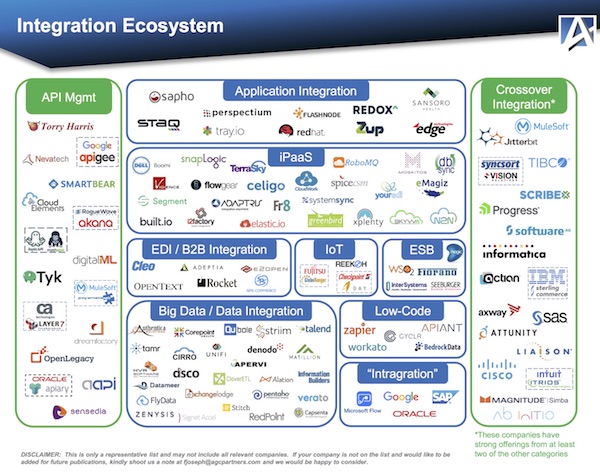

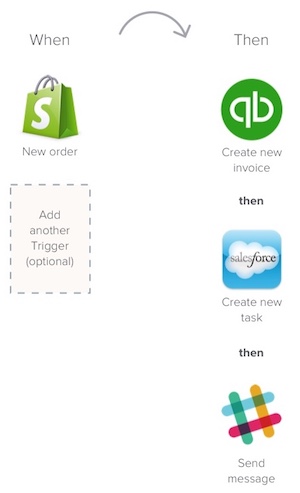
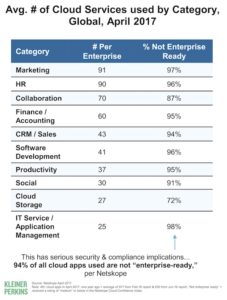

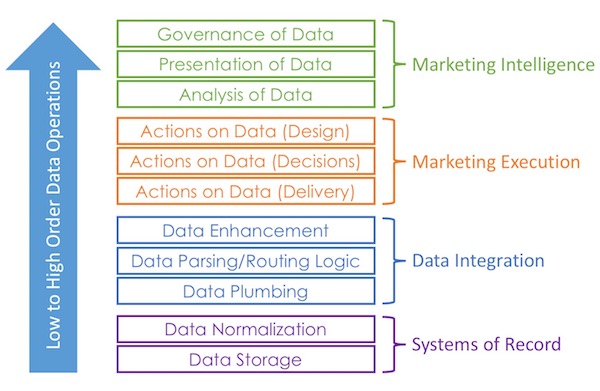
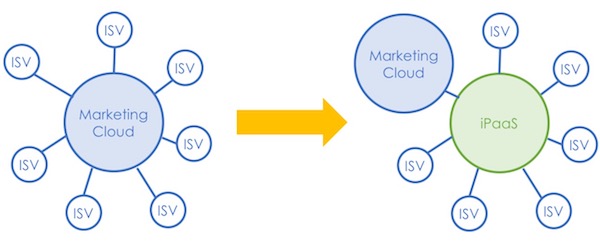
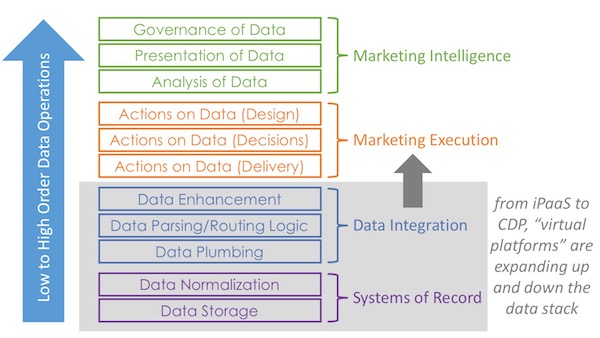
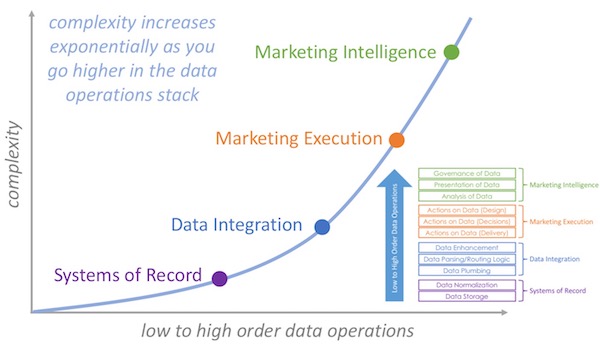

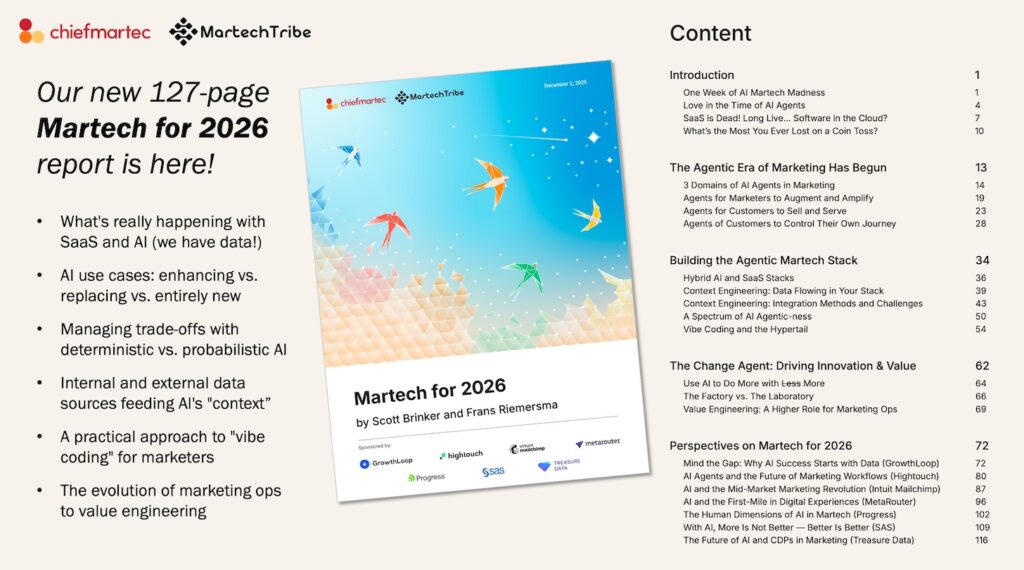


I’m pretty sure cloud behemoths like Marketo or Hubspot will stay strong over the years. They provide easy to use platforms which satisfy the needs of 90% non-technical marketers, while creating advanced mesh of PaaS integrations requires experience, technical knowledge and more resources (multiple services subscriptions and people to manage them).
Of course direct database access, possibility to query data with SQL and automate everything using APIs will give you great advantage, but let’s be honest – for majority of companies it’s an overkill. Especially when they are lacking in brand identity, copywriting and advertising.
Scott,
This makes complete sense, but it rings similar to the late 90’s surge of XML. XML did not take over the industry because of its complexity and size, and eventually other methods, less complex and smaller, became the norm. In other words, technology overtook technology.
iPaaS solutions are probably doomed as was XML, and perhaps CDP is the smarter path.
Which only goes to prove that there’s nothing new under the sun.
One more thing: I think we’re at the point where we need an industry-standard OSI model equivalent.
Like your challenging thinking as ever! Can I please add ‘data creation’ right at the bottom of your stack? Creating the ‘right data’ to power the whole stack is a critical component, and the data needs to be much better than simple clicks and events if you want to do serious AI.